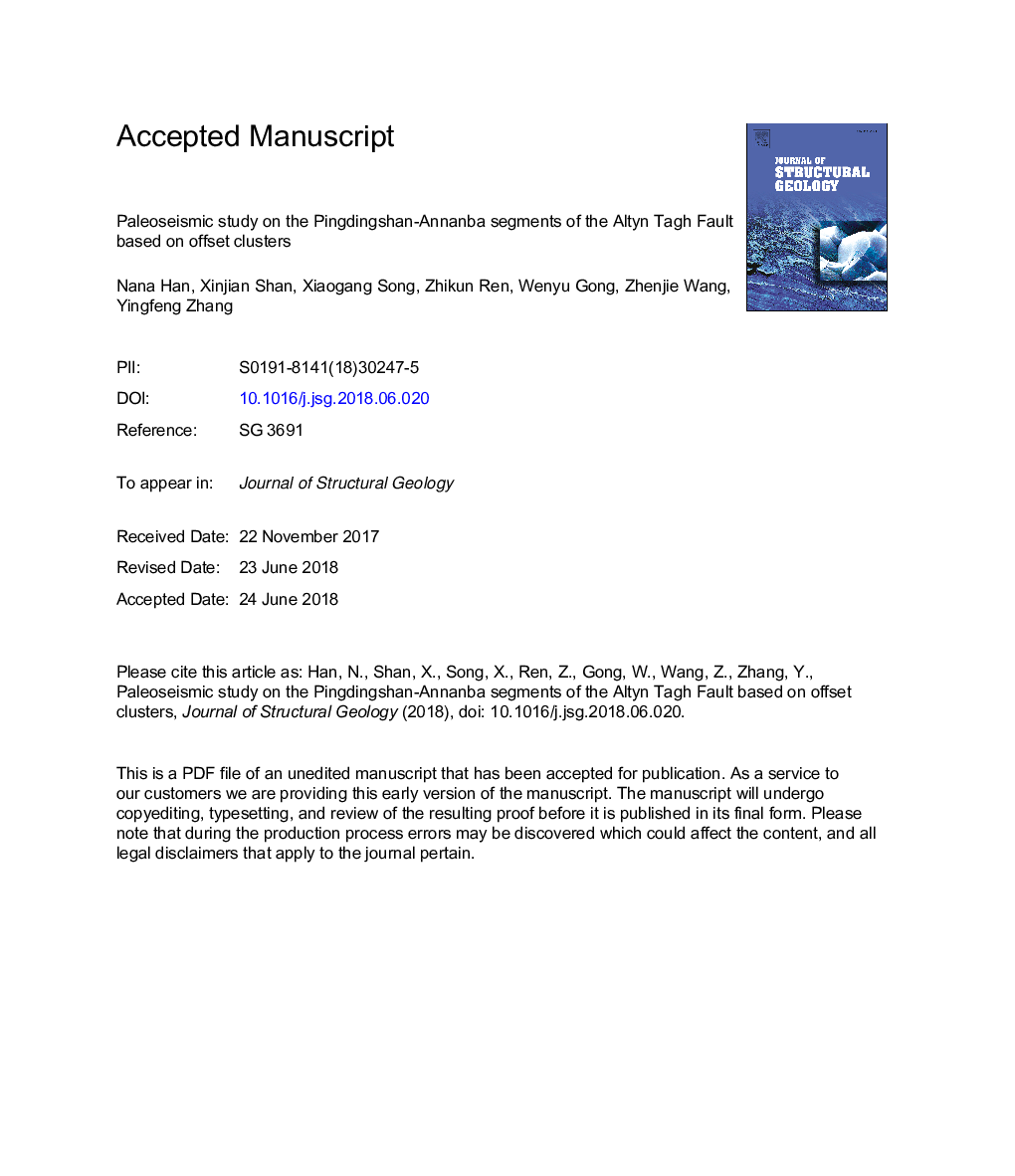| Article ID | Journal | Published Year | Pages | File Type |
|---|---|---|---|---|
| 8914331 | Journal of Structural Geology | 2018 | 45 Pages |
Abstract
Previous studies using paleoseismic trenches and numerical models proposed two different fault rupture models for the Pingdingshan-Annanba segments of the Altyn Tagh Fault, which are both poorly validated because of a lack of measurements of surface rupture displacements. In this paper, we use high-resolution satellite imagery to measure offset geomorphic markers. Taking the fault geometry into consideration, the most likely paleoseismic rupture parameters are determined by comparing the results of the cumulative offset probability densities (COPDs) and the empirical relationships of seismic parameter. The results show that the most recent earthquake (1270A.D.-1775A.D.) along the Suoerkuli segment only ruptured the Suoerkuli Valley, with a surface rupture length of 140â¯km, an average horizontal displacement of 3.12â¯m and a moment magnitude (Mw) of 7.4-7.6. The penultimate earthquake (676A.D.-1347A.D.) ruptured both the Annanba segment and part of the Suoerkuli segment with an average horizontal displacement of greater than 5â¯m, a surface rupture length of 120-260â¯km and Mw 7.4-7.8. The rupture parameters of the above two earthquakes demonstrate that the Suoerkuli and Annanba segments are individual fault segments which can rupture independently with a surface rupture length more than 100â¯km. The Pingdingshan double bend to the west of the Suoerkuli segment is likely to be an endpoint that inhibits the rupture propagation towards further west.
Related Topics
Physical Sciences and Engineering
Earth and Planetary Sciences
Geology
Authors
Nana Han, Xinjian Shan, Xiaogang Song, Zhikun Ren, Wenyu Gong, Zhenjie Wang, Yingfeng Zhang,
